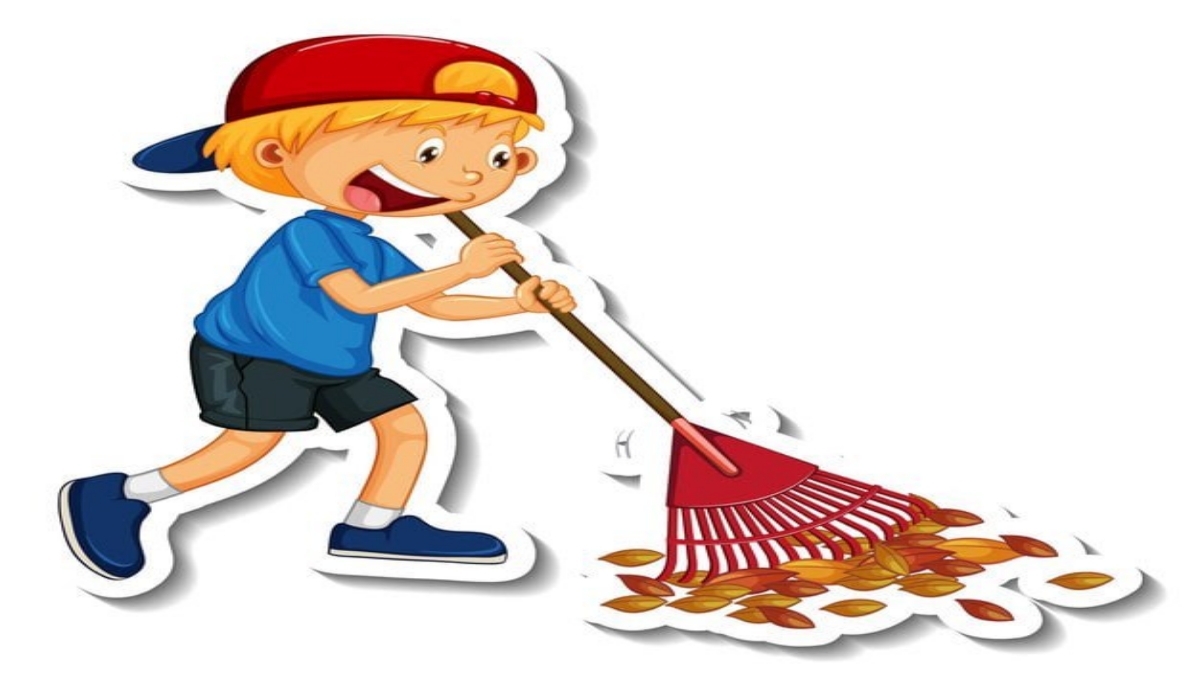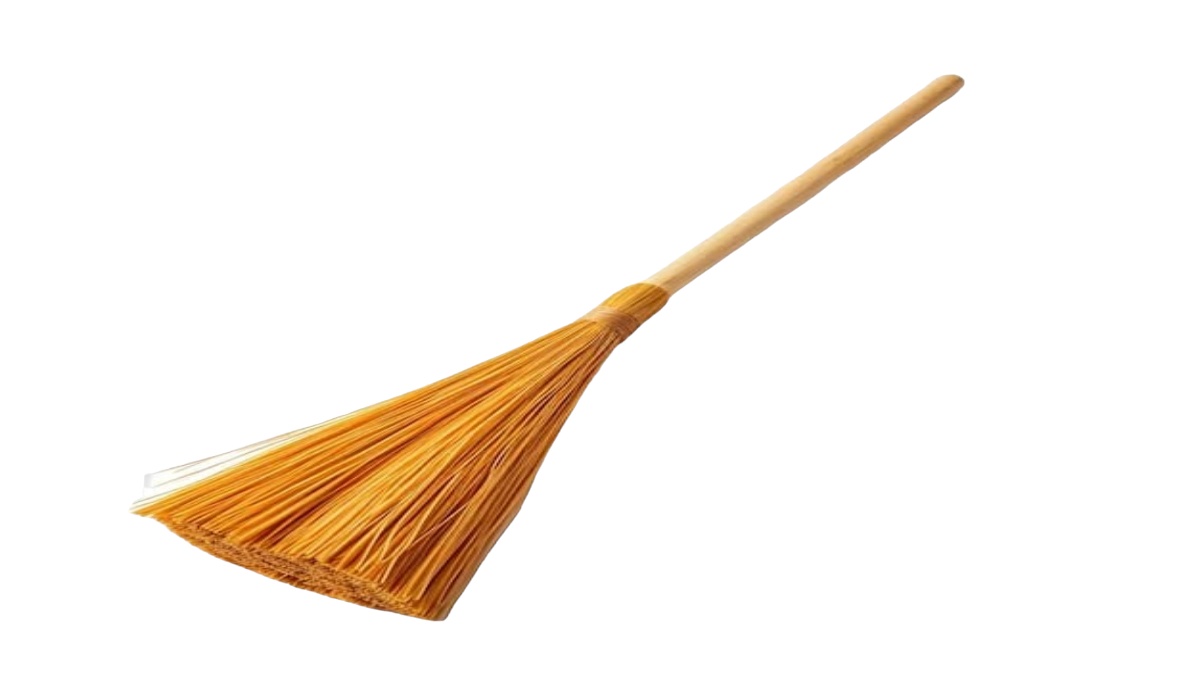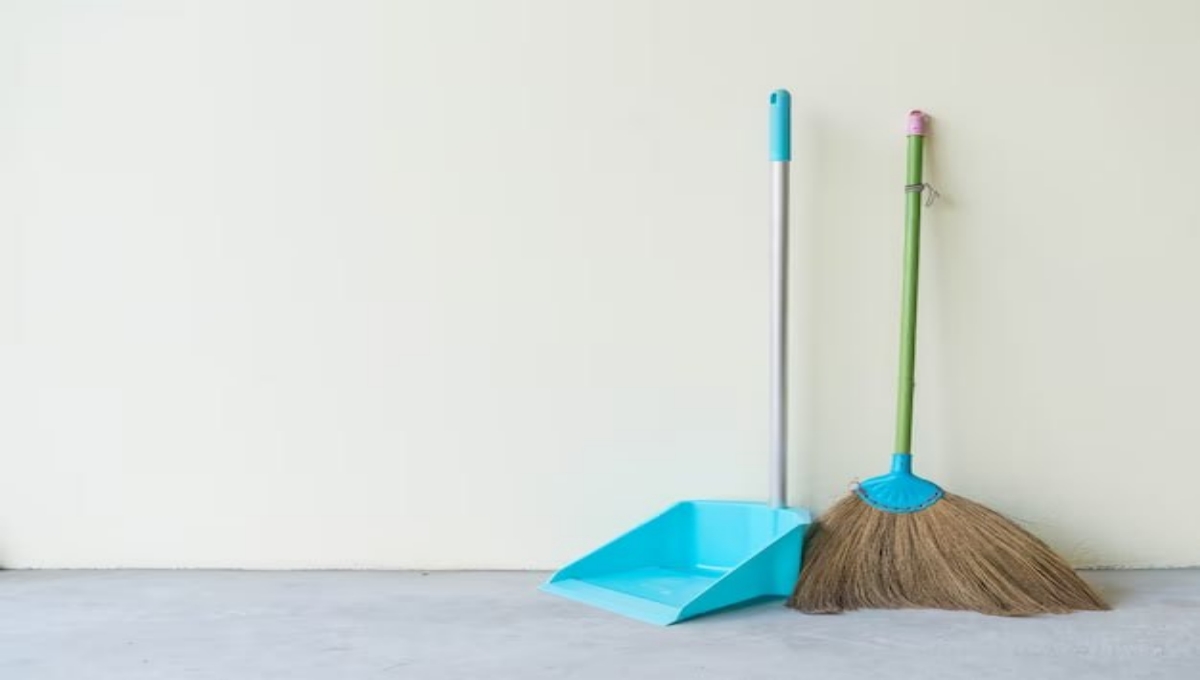A standard broom is typically around 3 to 5 feet tall. Brooms come in various sizes to cater to diverse cleaning tasks.
Brooms, the longstanding allies in our quest for cleanliness, differ in height depending on their design and purpose. Whether it’s for sweeping indoors or out, manufacturers craft these indispensable tools to suit the task at hand as well as the user’s comfort.
A household broom often measures between 3 to 5 feet, ensuring practicality for users without straining their backs. This height range is optimal for providing leverage and control during sweeping motions. By considering user experience and ergonomic design, brooms remain a fundamental part of our daily cleaning arsenal. Choosing the right broom, with height as a crucial factor, can transform a mundane chore into an efficient and comfortable task. Remember to select a broom that not only fits your space but also complements your height and sweeping style for the best cleaning experience.
Sizing Up The Sweep
Welcome to ‘Sizing Up the Sweep’, a detailed look at broom heights. Brooms vary in size for different uses. Knowing the right size ensures effective sweeping. Let’s explore broom heights and the options available.
Average Heights Across Brands
Different broom brands have varying sizes. Most brooms have a standard range. This range is between 48 to 56 inches tall. Below is a comparison of popular brands and their average broom heights.
| Brand | Average Height (inches) |
|---|---|
| O-Cedar | 53 |
| Libman | 54 |
| Rubbermaid | 55 |
Custom And Adjustable Options
Custom brooms cater to special needs. They can be made to specific heights. That helps for taller users or special sweeping areas. Adjustable brooms are yet another choice. They offer flexibility with height. Users can change the broom length as needed. Here’s what to consider:
- Telescoping handles adjust to your height
- Custom sizes can be ordered for unique spaces
- Adjustable brooms help prevent back pain
Bristle To Handle
Exploring the dimensions of brooms, we dive into the essential part that sweeps our floors: the Bristle to Handle.
From Fibers To Full-length
Understanding a broom’s height starts by looking at its two main parts. The part that touches the floor is made of many small fibers. We call this the bristles. The part we hold to sweep is longer and called the handle. By adding the length of the bristles to the handle, we get the full height of the broom. Each broom has different sizes based on where we use it.
- Small Brooms: Short handle, used indoors.
- Large Brooms: Long handle, used outdoors.
| Broom Type | Handle Length (approx.) | Full Length (approx.) |
|---|---|---|
| Indoor Broom | 3 to 4 feet | 4 to 5 feet |
| Outdoor Broom | 4 to 5 feet | 5 to 6 feet |
Material Matters In Measurement
The materials used in a broom can affect its size. Brooms with plastic bristles are often lighter and shorter. Those with natural fibers, like corn or straw, might be taller and heavier. The handle might be wood or metal. Wood handles are thicker, sometimes making the broom taller. Metal handles are thinner and might adjust in length.
- Plastic Bristles: Lighter, shorter, good for indoor use.
- Natural Fibers: Taller, heavier, great for outdoor tasks.
- Wood Handles: Thicker and fixed size.
- Metal Handles: Thinner and may be adjustable.
How tall a broom is can change how we use it. For tighter spaces, a shorter broom is better. For large areas, like patios, a taller broom helps us reach further. The material of the broom is as important as the length. It can make sweeping easier or harder. Remember, a broom that fits right makes cleaning no trouble at all!
The History Of Broom Dimensions
The History of Broom Dimensions sweeps through centuries. Brooms have not always been the household height we know today. Dimensions shifted as their uses and users’ needs changed. Let’s delve into the fascinating evolution and cultural impacts on broom size.
Evolution Of Broom Design
The traditional broom, known for its wooden handle and natural bristles, has undergone significant changes. Historically, broom dimensions matched their makers and users. Early brooms were hand-crafted, often tailored for the individual. Their size allowed for efficiency without strain.
- 14th Century: Brooms began primarily as a bundle of twigs tied to a stick.
- 18th Century: The advent of the “broom squire” presented more uniform shapes and sizes.
- Industrial Revolution: Introduced mass production, standardizing lengths to around 4 to 5 feet.
Innovation in the 20th century led to synthetic materials and ergonomic designs, aiming to maximize comfort and efficiency. Extendable handles and adjustable angles now cater to the modern world.
Cultural Variations In Broom Size
Different cultures have distinct takes on the ideal broom size. Brooms serve not just for cleaning but also hold cultural significance. Folklore and tradition often inform their design.
| Region | Typical Use | Average Length |
|---|---|---|
| Western Europe | Household cleaning | 55 inches |
| East Asia | Ritualistic purposes | Varies |
| Sub-Saharan Africa | Indoor and outdoor use | 36 inches |
In Japan, for example, short brooms called Houki are popular. Their length aligns with a kneel-down style of cleaning. In contrast, Western brooms typically stand upright, tailored for an individual’s height and preventing back pain.
Ergonomics Of Broom Use
Ergonomics are vital when considering household tools like brooms. The right broom can make cleaning less tiring. Picking the perfect broom height enhances efficiency and reduces strain on the body. Let’s dive into how to match broom height with the user for the best ergonomic experience.
Matching Broom Height To User
- Select a broom as tall as your chin for optimal comfort.
- Children need shorter brooms for easy handling.
- Adjustable handles allow flexible sizing.
The Impact On Sweeping Posture
A broom too short forces you to bend, causing back pain. A broom too tall impedes control. Correct broom height means:
- Standing straight with shoulders relaxed.
- Minimal bending at the waist.
- Sweeping with arms, not the back.
Broom Sizing Innovations
Exploring the realm of Broom Sizing Innovations unveils a world where practical magic meets modern engineering. The height of your traditional broom is no longer a one-size-fits-all matter. Advances in broom design cater to user comfort, adaptability, and storage convenience.
Telescopic And Modular Designs
The days of the static broomstick are fading into folklore. Telescopic and modular broom designs now allow users to customize the length of their brooms with ease. Features of these innovative designs include:
- Adjustable Height: Extendable poles to fit any user.
- Space-saving: Collapsible for easy storage.
- Material Flexibility: Durable, lightweight aluminum or plastic.
Future Trends In Broom Ergonomics
Ergonomics in broom design is shaping the future of cleaning tools.
Designs focus on:
| Feature | Benefit |
|---|---|
| Customizable Grip | Reduces hand fatigue |
| Curved Handles | Minimizes bending |
| Balanced Weight | Improves comfort during use |
Such innovations promise better posture and fewer aches for users, ensuring a tidier home doesn’t come at the expense of comfort.
FAQs About How Tall Is A Broom
What Is The Standard Broom Height?
The standard broom height typically measures around 48 to 56 inches.
How Do Broom Sizes Vary?
Broom sizes vary with purpose; indoor brooms are generally shorter than outdoor ones.
Can Broom Height Affect Cleaning?
Yes, a broom’s height can impact comfort and efficiency during cleaning.
Are There adjustable-height brooms?
Adjustable height brooms are available to suit different user preferences.
What’s The Ideal Broom For Short People?
Shorter individuals might find brooms around 40 to 50 inches ideal for comfortable use.
Conclusion
To wrap up, broom height varies, often between 42 and 60 inches. Choosing the right length ensures comfortable, effective cleaning. Remember to consider storage space and handle ergonomics before purchase. Keep your space spotless with the ideal broom size for you.
Happy sweeping!




